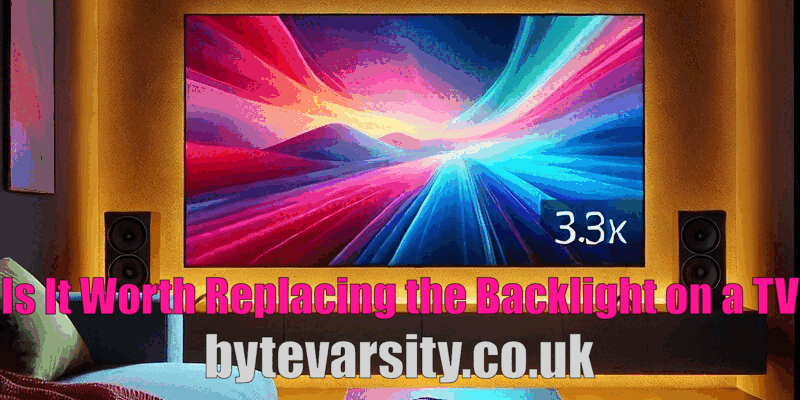Introduction
Television backlighting plays a crucial role in delivering high-quality images and enhancing the overall viewing experience. The backlight is responsible for illuminating the display, enabling viewers to see rich colors and fine details. When backlighting issues arise, they can significantly diminish the performance of a TV. This leads many owners to ask: Is it worth replacing the backlight on a TV? Understanding the implications of backlight failure is essential for making an informed decision.
Related: TV Fix Isues
Understanding TV Backlights
There are several types of backlighting used in modern televisions, the most common being LED and OLED.
- LED TVs utilize a backlight to illuminate the LCD screen, providing excellent brightness and color accuracy.
- OLED TVs, on the other hand, consist of self-emissive pixels that do not require a separate backlight, allowing for deeper blacks and a broader color range.
Each type has its advantages and potential drawbacks, such as brightness uniformity and viewing angles. Common issues with backlights include uneven brightness, flickering, and complete failure, often stemming from age or manufacturing defects. Identifying these problems is crucial for deciding whether a backlight replacement is necessary.

Cost Analysis of Backlight Replacement
When considering whether to replace a TV backlight, cost is a significant factor. The average cost for backlight replacement can range from $100 to $300, depending on the TV model and the complexity of the repair process.
- Repair Costs: Basic repairs for minor backlight issues may fall at the lower end of this spectrum, while extensive replacements for larger or more complex TVs could reach the higher end.
- New TV Comparison: With many affordable options on the market today, particularly with advancements in technology and improved picture quality, many owners find that investing in a new TV may be more beneficial than replacing an old backlight. New TVs often come equipped with better technology and energy efficiency, enhancing the overall viewing experience.
When to Consider Backlight Replacement
Several factors should influence the decision to replace a TV backlight. The age of the television, the cost of the repair in relation to the TV’s value, and the severity of the backlight issue all play a role.
- Age of the TV: If the television is relatively new and the backlight problem is isolated, a repair might be justified. However, if the TV is older and showing multiple signs of wear, replacement might be the better route.
- Signs of Backlight Issues: Recognizing signs that indicate backlight problems is crucial. These can include dark spots on the screen, significant dimming, and flickering images. Noticing these signs early can help in making a timely decision about repair versus replacement.
Benefits of Replacing the Backlight
Replacing a faulty backlight can yield substantial benefits. One of the most notable advantages is the improvement in picture quality.

- Enhanced Viewing Experience: A new backlight can restore the vibrancy and clarity of the display, significantly enhancing your viewing experience, especially for movie lovers and gamers.
- Extended TV Lifespan: Backlight replacement can prolong the life of your television. For those who have a strong emotional attachment to their TV or appreciate its unique features, opting for a backlight replacement rather than purchasing a new model may be worthwhile.
Risks and Drawbacks of Backlight Replacement
While there are benefits to replacing the backlight, several risks and drawbacks should be considered.
- Complicated Process: The replacement process can be complicated, and if not executed properly, it could lead to further issues or even damage to the TV.
- Warranty Concerns: If the television is still under warranty, attempting a backlight replacement could void that warranty. Therefore, it’s essential to weigh the potential complications and warranty considerations against the benefits of repair.
Alternatives to Backlight Replacement
For some users, exploring alternatives to backlight replacement might be more feasible.
- DIY Fixes: Simple DIY fixes can sometimes address minor backlight issues, especially if the user has experience with electronics. However, this comes with risks, particularly for those unfamiliar with the internal components of their TV.
- Purchasing a New TV: With advancements in technology, investing in a new television could provide enhanced features and improved performance, making it a viable option for many consumers. New televisions often include cutting-edge technology, including 4K resolution, smart features, and improved energy efficiency.
Conclusion
In conclusion, deciding whether it is worth replacing the backlight on a TV involves careful consideration of several factors. The cost of repair, the benefits of improved picture quality, and the age of the TV all play a crucial role in this decision-making process. Ultimately, assessing these elements will help you determine the best course of action for your situation. Whether you choose to replace the backlight or invest in a new television, understanding your options will lead to a more satisfying viewing experience.